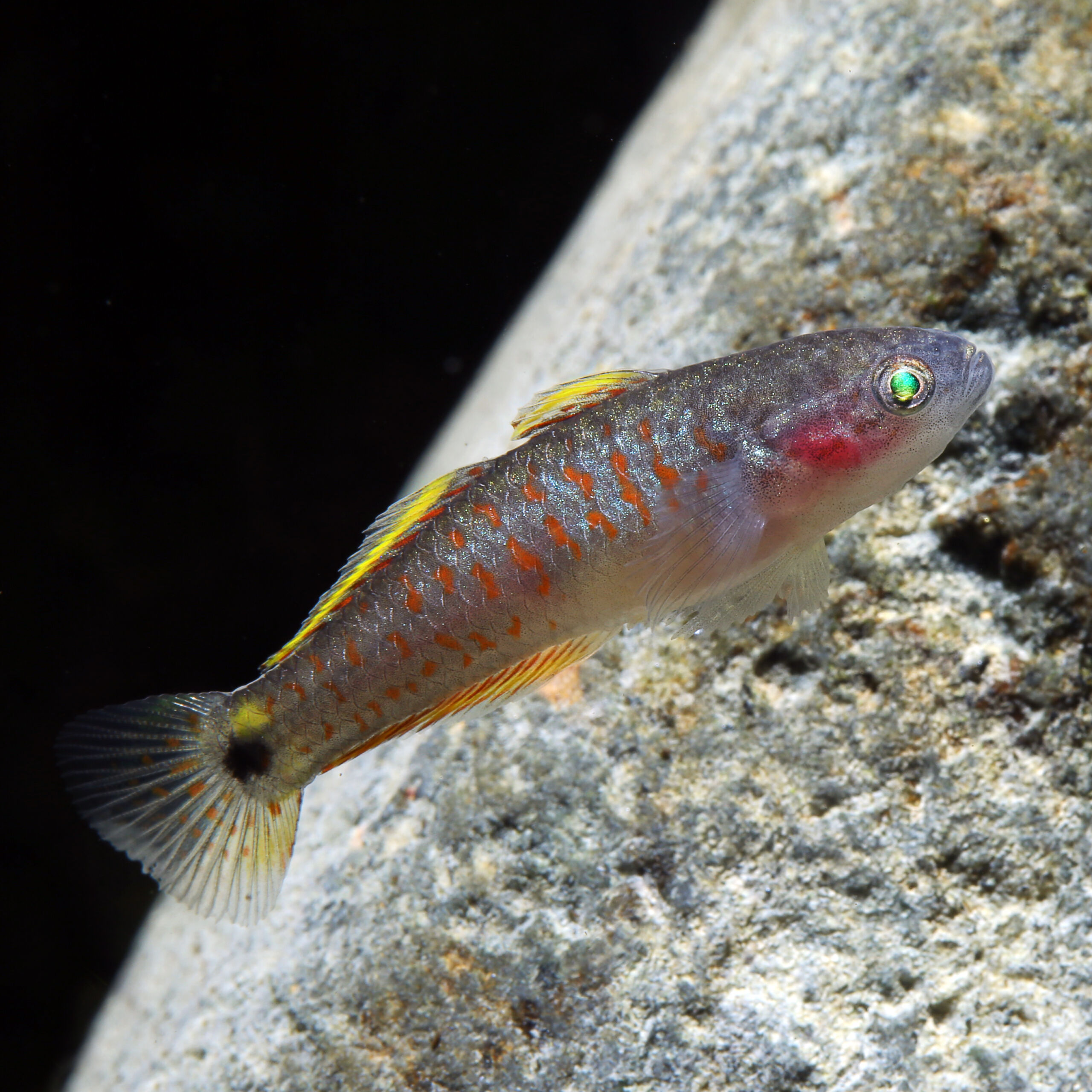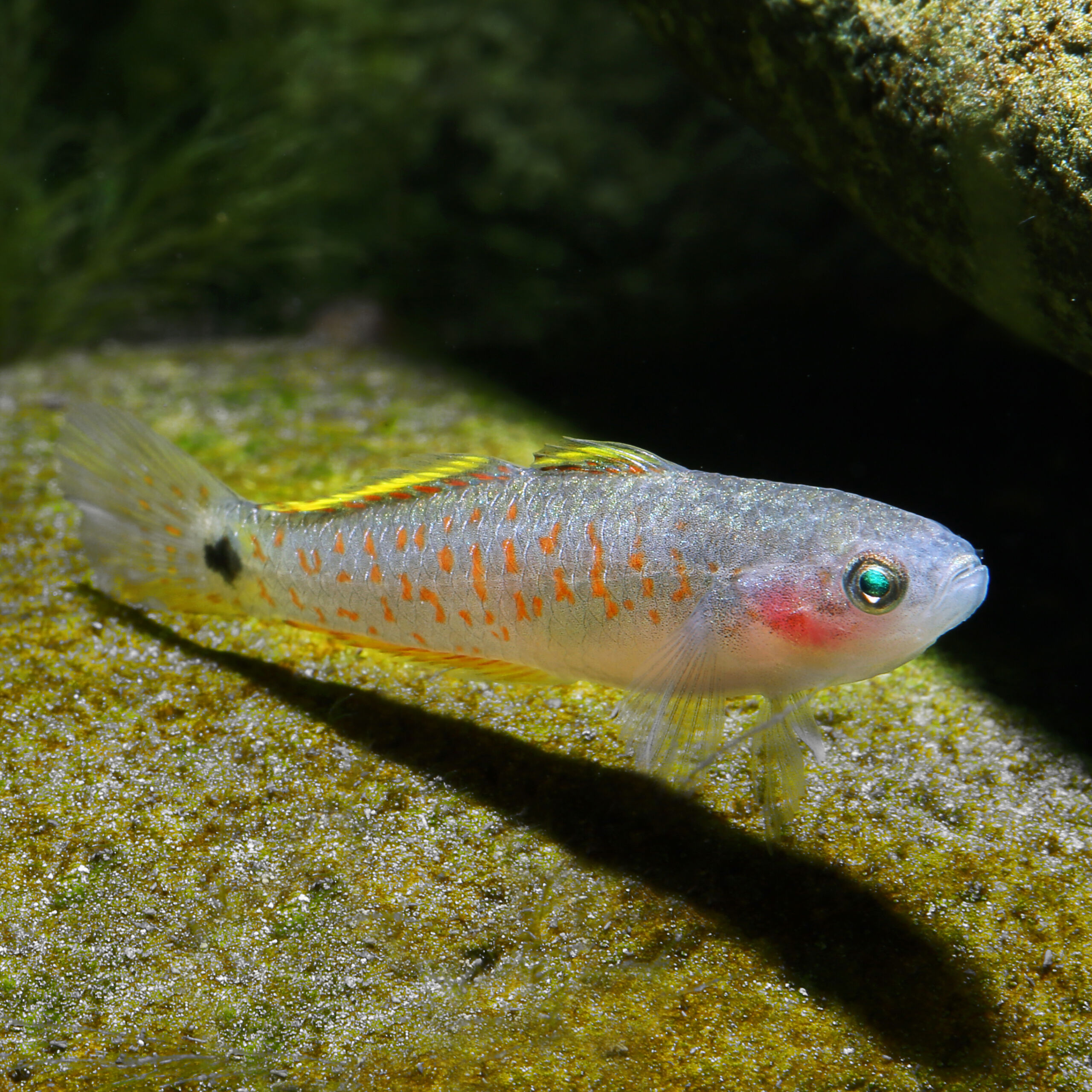Peacock Goby
Tateurndina ocellicauda
Beautiful to look at and interesting to observe, the pastel goby is a great aquarium inhabitant.
- very peaceful goby species
- beautiful coloration
- pastel and bright shades
1 in stock
 Delivery in a few working days
Delivery in a few working days
 Free shipping from €60 across Austria
Free shipping from €60 across Austria





Important data
Product description & details
The Peacock Goby, Tateurndina ocellicauda, is a goby from the sleeper goby family and is originally native to Papua New Guinea. This species of goby, up to 7 cm in size, is characterized by its colorful coloring, which ranges from pastel pink to blue, orange-red and yellow, making it a great sight.
Care in the aquarium
An aquarium with a capacity of at least 54 liters is required for the Peacock Goby. Dense edge planting and hiding places in the form of stone structures or roots ensure that it feels safe and comfortable. This species is best kept in pairs or in groups in slightly larger aquariums – ideally with a surplus of females. The Peacock Goby swims freely, but stays mainly near the ground. It is very peaceful towards similarly sized fish and can therefore be easily socialized with them. Fish that are too small and dwarf shrimp are rather unsuitable as they are quickly viewed as food.
Feeding
The Peacock Goby is fed primarily with live and frozen foods such as mosquito larvae, enchytraea, daphnia, artemia or tubifex. In some cases they can also be used to protein-rich fish food, but this is often not accepted.
Sexual characteristics and breeding
When fully grown, male Peacock Gobies are slightly slimmer and larger than females and can be easily identified by their beefy heads when they are older. Tateurndina ocellicauda females lay up to 200 eggs, preferably in tubular cavities, where they are guarded and supplied with oxygen by the male. The fish larvae hatch after about 4-8 days and can be fed with small live food such as rotifers and later with Artemia nauplii.






